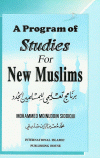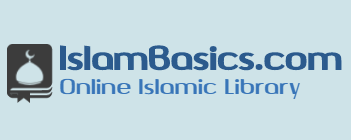A program Of Studies For new Muslims

Objectives and Methodology
- Objectives
The main objective of this program of studies is to provide a concise yet broad framework for the study of Islam primarily by Americans who have recently embraced it. To attain the main objective it is necessary that, in addition to the knowledge of Islamic beliefs and practices, the new Muslim should have some academic knowledge of the Qur'an and the Hadith, the life of the Prophet, the political and cultural history of Islam, the lives and works of the Companions and the scholars of Islam. On a practical level he should learn how to perform Salat and Hajj, observe Siyam and give Zakat, read and understand Qur'anic Arabic, memorize short surahs and establish a Muslim community.
The program is divided into three levels which are progressively detailed: 100 series, 200 series and 300 series. The first level is the most basic and should be mastered by every Muslim. The second and third levels are also important because they provide more detailed and specific information of the materials and concepts introduced in the first level.
- Methodology
The program is designed in such a way that a new Muslim can use any or all of the following methods, depending on his situation:
- Self-study
- Study circles (Halaqah)
- Group discussions
- Lectures
- Individual projects.
The 100-level courses are most suitable for self-study and study circles. The 200- and 300-series courses are academic in nature, the 300-level courses being rather specialized. These courses should be taught by a competent teacher in a classroom or in a group discussion set-up.
If this program is structured as a formal class-type instruction, it will require that each instructor undertakes the selection of supportive materials and texts (the eighth part of the program is a listing of available reference materials and texts). However, the performance expected of each student is stated in general terms in the sequentially numbered items of the syllabii. This program
of studies, therefore, may be used with students of various ages and educational backgrounds by critically selecting the appropriate materials and texts.
The following example is presented in order to assist instructors in writing performance (or behavioral) objectives.
Each performance objective must include these four areas:
- Who will be performing?
- The specific performance expected.
- The conditions under which the performance will take place and,
- The measurement of the students' mastery of the performance.
Each of the sequentially numbered items in the syllabii of this program is a concept easily restated as a performance. The following example from Part I, course 100- "Introduction to
Islam," should make this point clear.
1.1 Explanation of the Concept of Islam
Performance objective:
Given selected chapters from Islam in Focus and class discussion of what is Islam, the student will define (in writing or orally) what Islam is distinguishing it from Muhammadanism, Christianity or Judaism completely and accurately.
- Who will be performing?
The student
- What is the performance?
Defining (in writing or orally) what is Islam distinguished from Muhammadanism, Christianity or Judaism.
- What are the conditions?
Given selected chapters from Islam in Focus and class discussion of what is Islam.
- What is the measurement?
Completely and accurately (mastery)
Each of the preceding questions should be raised about each sequentially numbered item in the syllabii. If the instructor is diligent in this regard, the process of instruction is quite manageable and each student's progress is measurable.
Each instructor should select supportive materials which are visually attractive. Films, slides and other instructional aids should be used:
Individual projects may be assigned to students, for example:
Write research papers on (1) The attributes of Allah, (2) The Life Hereafter, (3) The Islamic concept of brotherhood and its application, (4) The methodology of Da'wah in America.
For teaching cultural history it will be extremely useful to make use of films and slides of mosques, buildings and cities of the Muslim world. Also art objects, samples of calligraphy, dresses, carpets, etc., may be shown to the class.
